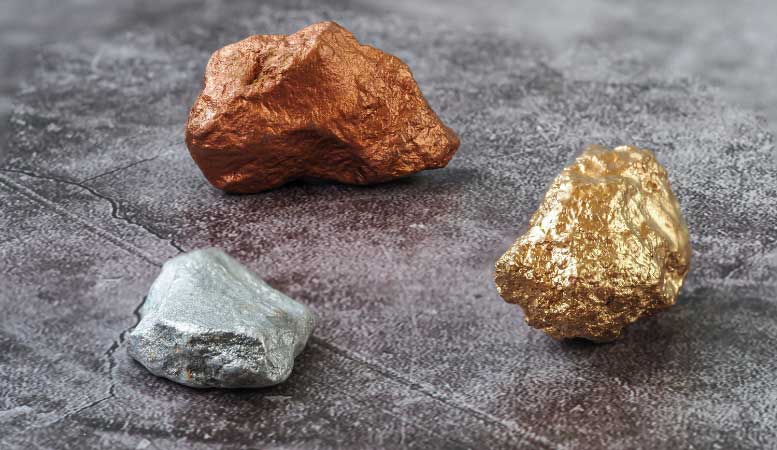Table of Contents
Is silver undervalued? It’s a common question that crops up for new and seasoned investors alike.
Like gold, silver is a safe-haven class investment. Unlike gold, silver’s value depends on a complex web of market factors. This can make it difficult to determine whether it is an advantageous time to buy silver or not.
In this article, our Oxford Gold Group precious metal experts teach you how to untangle the threads obscuring the answer to find the silver lining.
Is Silver Undervalued?
The short answer is: yes. Right now, a rare combination of market factors has created what appears to be an uncharacteristic valley in silver pricing. But before you jump at the chance to buy the dip, it’s important to understand why the dip came about and how to read the silver market.
There is a large discrepancy between physical supply and overall demand in the silver market right now. This is unlikely to change in the near future because supply can only grow so fast, whereas demand seems nearly insatiable.
This discrepancy is creating a stall in the price of silver, but market conditions suggest that the price of silver will rise quickly when the bottleneck in the market resolves itself.
Historical Price Trends of Silver

To truly answer the question: “Is silver undervalued?” you need a historical perspective on silver prices and to understand the factors that most directly influence the price of silver.
Global supply and demand, geopolitical events, and economic conditions are the main drivers of silver prices today.
Historically, silver has always been less valuable than gold. In Ancient Rome, one gold unit was equal to roughly 12 silver units. This is known as the gold-to-silver ratio. In the early days of the United States, the ratio was set at 15:1. Today, that ratio is around 60:1.
From a historical perspective, silver has a long way to go to get back to its historical equilibrium point with gold.
Factors Affecting the Value of Silver
The value of silver depends on factors like supply and demand, world events, and economic conditions.
Global Supply and Demand
As with every other commodity, global supply and demand are the most obvious drivers of the price of silver. Unlike gold, which is mainly used in jewelry or simply held as bullion, silver is widely used as an industrial metal.
Industrial consumption represents 65% of all silver use. The tech industry, inflation, silver scrap stockpiles, and gold prices all impact the value of silver. An immense amount of silver is required to support the growth in the manufacturing of cellphone technology, solar technology, electric vehicles, and other electronics.
As these industries continue to grow, so will their demand for silver. Until silver production can catch up, these factors will continue to keep the supply of physical silver extremely scarce, which drives up demand.
Geopolitical Events
Silver prices rise when geopolitical events like coups, wars, and major policy changes cause economic uncertainty. When faith in currency is low, people tend to invest in precious metals to insulate their portfolios from market fluctuations related to geopolitical events.
The war in Ukraine, tensions between China and the U.S. as well as tensions between the U.S. and Russia, have thrown global economic stability into question, which in turn contributes to the demand for silver as an insulator for investors’ portfolios.
Economic Conditions
As with the influence geopolitical events exert on silver prices, economic conditions also significantly affect silver prices. When central banks raise or lower interest rates or economies enter recessions or booms, the price of silver fluctuates in response.
Big interest rate hikes from the U.S. Federal Reserve have made investors reluctant to invest in silver. However, the early stages of a recession in the U.S. may erode that reluctance as investors crave the security that precious metals can offer their portfolios.
Price Comparison of Silver to Other Precious Metals

In comparison to other metals, silver is cheap. The gold-to-silver ratio in 2023 was 60 ounces of silver to equal one ounce of gold.
That sounds lopsided, maybe even a little like a waste of your time and money to invest in. That is why it is so important to understand the complex factors influencing the silver market. Perspective is everything.
The price of silver is climbing steadily and has been since it bottomed out at about $11 USD at the beginning of the COVID-19 pandemic.
Silver is struggling to shake off a stall in price at between $24 USD and $26 USD, but experts predict strong demand conditions will remain in effect for the foreseeable future. This would suggest that the price of silver will break out of its rut in the near future.
Hopefully, this is the last step before it returns to its historical value relative to gold. Historically, the gold-to-silver ratio should hit equilibrium around 15:1. Barring any wildly disadvantageous market conditions, it seems silver’s surge has legs.
How Does Industrial Demand Affect the Value of Silver?
Industrial demand affects the value of silver in a big way. The reason silver is so important for industrial uses is that it is the most conductive metal on the planet, making it extremely desirable for electronic components.
The prevalence of electric vehicles, solar panels, and other green technologies is creating immense demand for silver, let alone its widespread use in cellphone, battery, and computer technologies.
Tilting matters more in favor of a silver price surge; the supply of physical silver is not keeping up with demand. Supply is growing slowly, but demand has eclipsed it.
Investment Options for Silver
There are many avenues for investors to enter the silver market. As with gold, there are silver ETFs, silver mutual funds, silver company stocks, and silver futures investors can purchase in addition to or instead of physical silver.
Similar to gold, there are savings associated with investing in “paper silver” instead of physical silver. A note about the current market conditions at the time of writing, there is a major discrepancy between paper silver and physical silver. Because physical silver is so scarce, paper silver demand is out of balance with physical silver.
The silver market is advancing, but prices are in flux because the market seems to want to surge, but without physical supply for investors, demand is limited to the realm of paper silver.
What Are the Risks of Investing in Silver?

Compared with other precious metals like gold, platinum, and palladium, silver is less stable. Its relationship to the industrial market and its relationship with gold make predicting short-term price stability challenging.
Especially with the shortage of physical silver, the options left to invest in silver are slightly riskier. This is not abnormal. It’s a permanent feature of the precious metals markets. Paper metal investments are inherently riskier than holding physical metal because all stocks can go to zero in the event of a market crash or a spate of bankruptcies in the industry.
It’s important to consider these factors and take your appetite for risk into account before deciding on an investment strategy.
What Is the Outlook for the Future Price of Silver?
The outlook for the future price of silver is good. Most reports coming out of the last three years are strongly bullish on silver.
Silver futures are up and rising, and industrial demand is not forecasted to diminish over the next five years. In fact, all signs indicate that demand will only increase. Consumer demand may show an uptick as well due to economic recession factors in the global market as investors move to hedge their portfolios with precious metals.
Remember, the gold-to-silver ratio is out of balance right now, and over the last few years, silver has been able to reduce the ratio from 80:1 to 60:1. Under the current market forecast, experts expect to see strong growth for silver over the next five years.
Is Silver Still a Good Investment?
Again, there are many factors going into this judgment, and you should still do your research. Just because silver is undervalued does not mean that you are insulated from market risks or bad operators. Do your homework to make sure you are investing safely and wisely.
Silver is a good investment only if it aligns with your investment strategy and you understand the risks and rewards associated with the silver market. If you’re willing to stick it out during this period of flux in the silver market to see its bull market, chances are you will be happy with your investment.
All signs point to strong growth in the long term, but a short-term hold strategy may disappoint. If you’re still wondering: “Is silver undervalued?” The answer is a resounding, “yes,” for long-term investors.
If you have more questions about investing in silver, Oxford Gold Group is here to answer them. Our experienced team of professional precious metal investors has the tools, expertise, and knowledge to help you determine whether investing in silver aligns with your goals. Call 833-600-GOLD to talk to us today.








